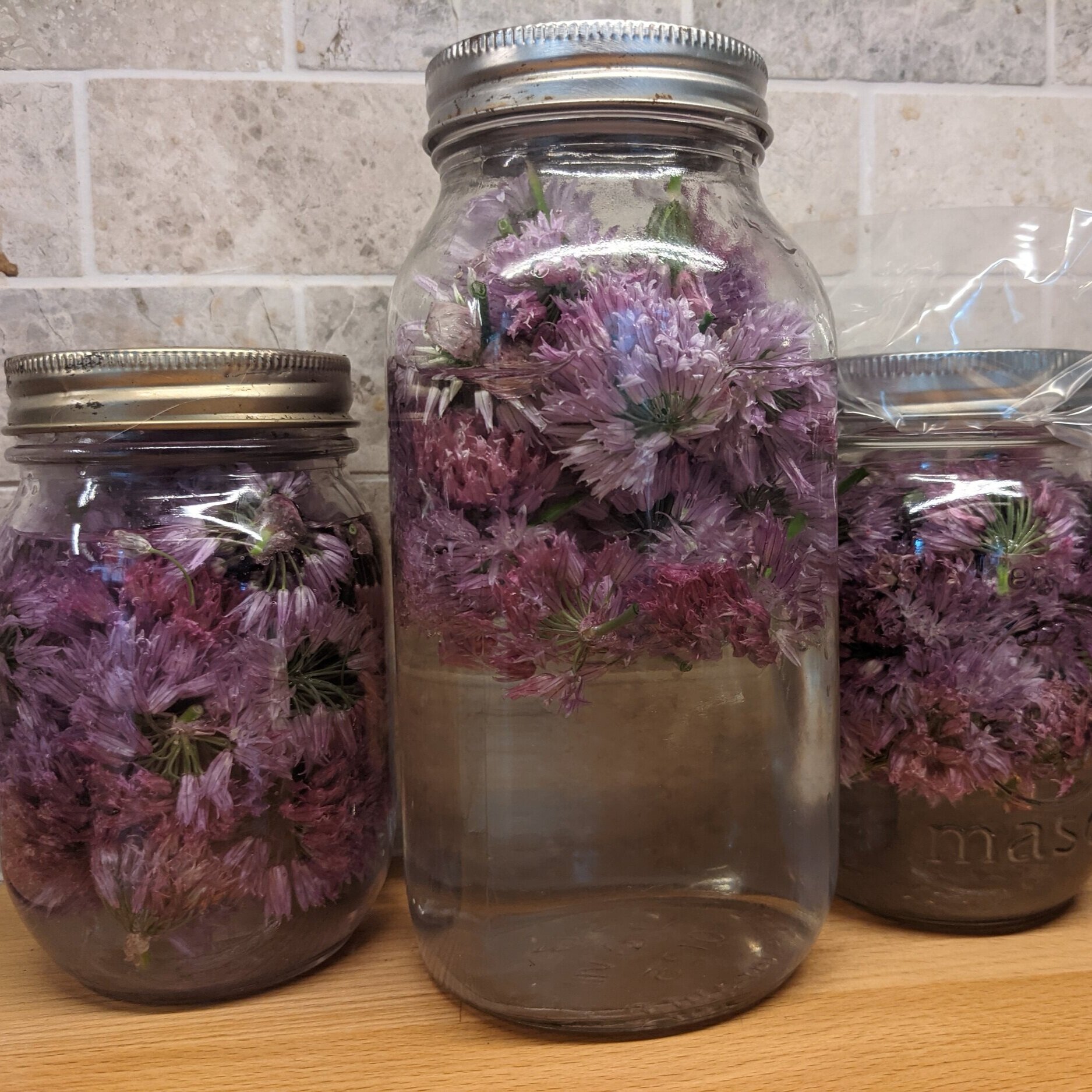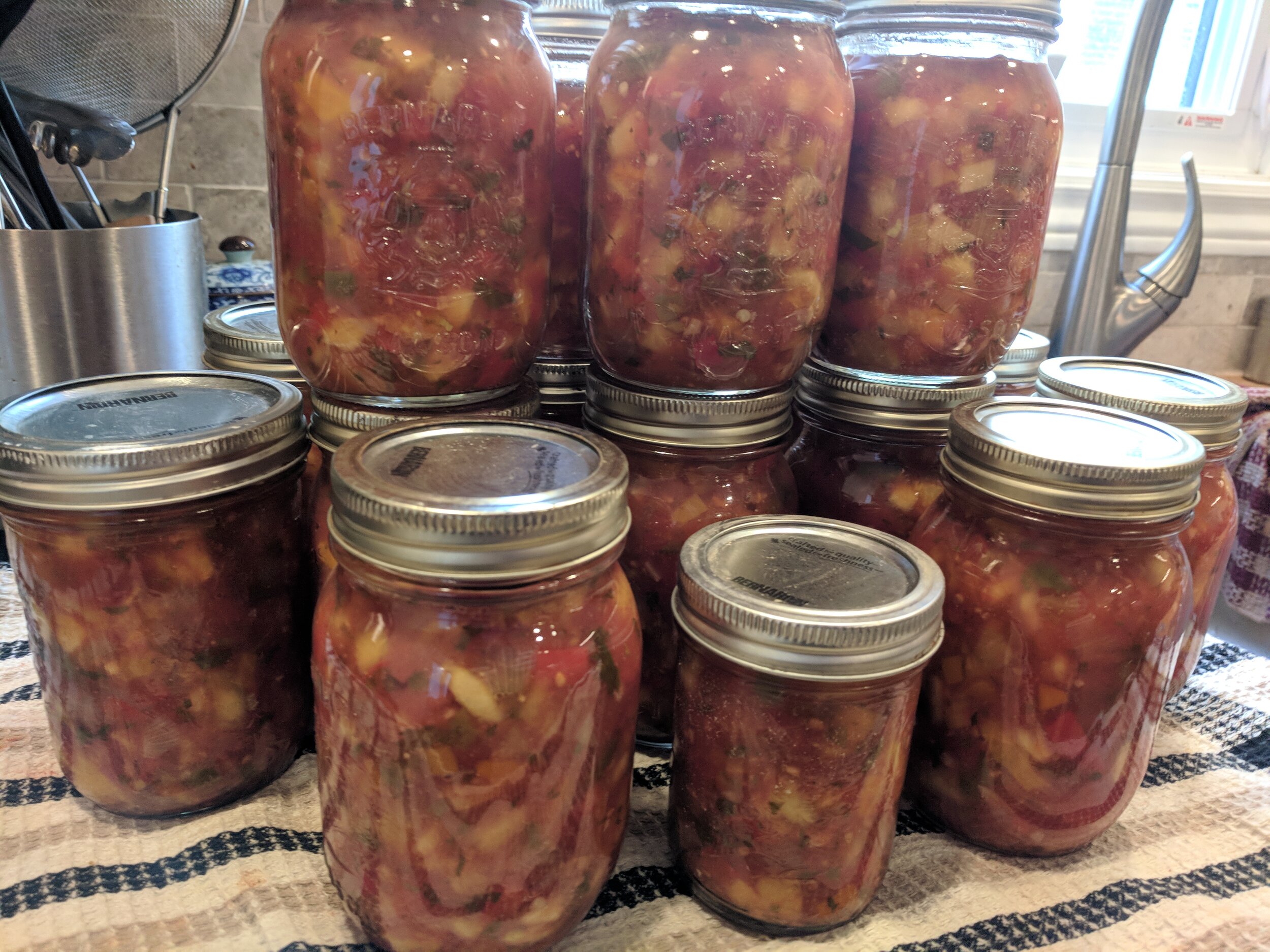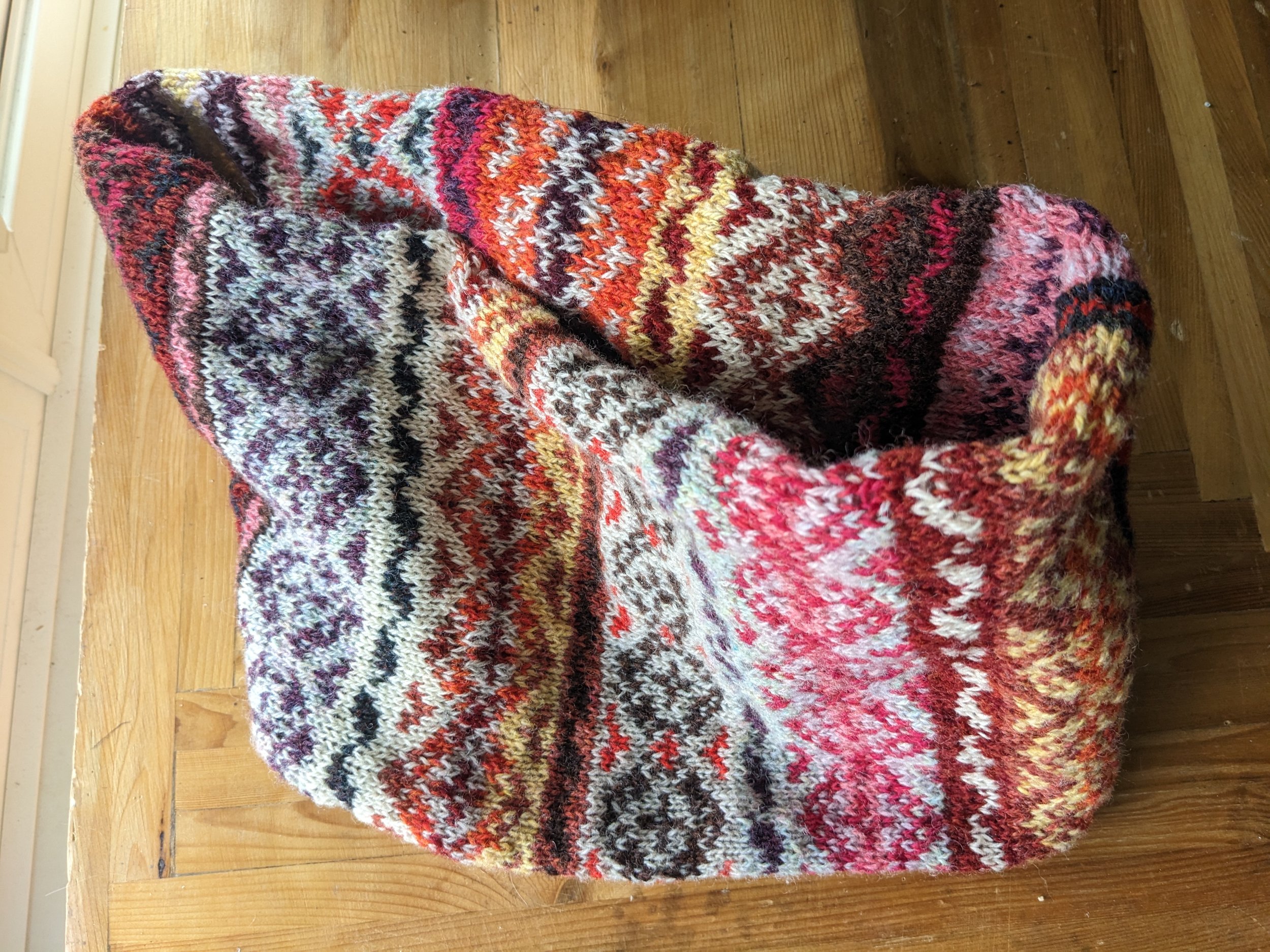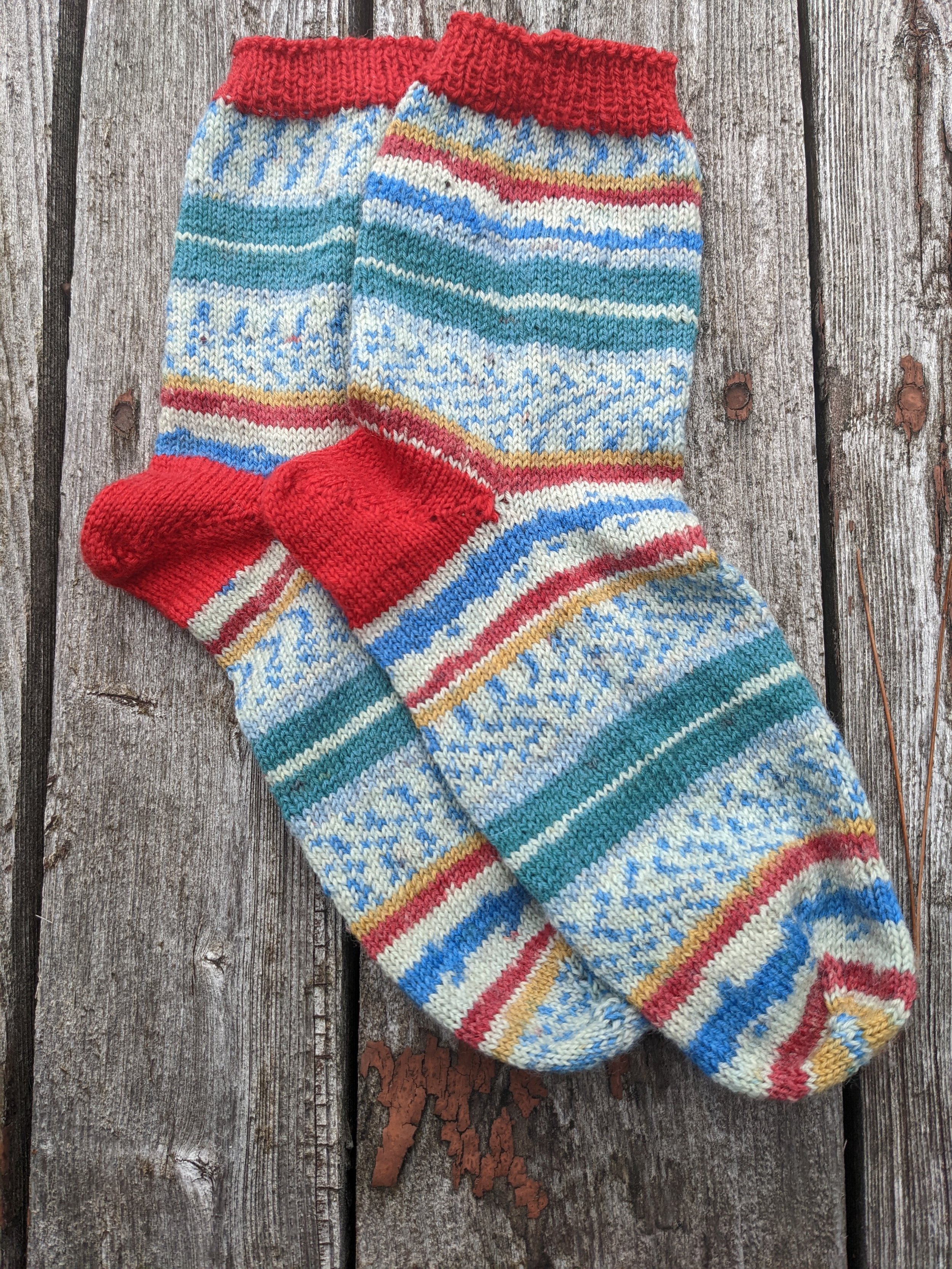Busy week! Amid making a fresh supply of classic dill pickles, spicy tomato soup, and fan-favourite Lady Ashburn pickles on my vacation week, I wanted to try something new. And since I had a pile of tomatoes available to use, that something new would involve tomatoes. One of the kids suggested ketchup, so I went on the hunt for recipes.
The recipe below is based on that in the Bernardin Complete Book of Food Preserving (an excellent resource), with a couple of tweaks in terms of spices because of what I had on hand. Turned out so good!!
You’ll need:
24 lbs tomatoes, cored and quartered (you don’t need to peel - woo hoo!)
3 cups onions, chopped
3 cups cider vinegar
3 T celery seeds
1.5 tsp mustard seed
3 cinnamon sticks
1 tsp cayenne pepper (I used 1 tsp Valentina hot sauce instead)
1 1/2 cups white sugar
1/4 cup pickling salt
Instructions for cooking and canning:
Pack spices (except the cayenne pepper) into a tea ball, tea bag or makeshift spice bag using cheesecloth. You’ll likely have to break up your cinnamon sticks or leave them whole outside of the bag.
In a nonreactive pot (e.g., stainless steel), bring vinegar and spice bag (and cinnamon if separate) to a boil over high heat. Remove from heat and let stand 25 minutes or so. Discard spices.
While your spiced vinegar is standing, combine tomatoes, onions, and cayenne (or, in my case, hot sauce) in a large pot and bring to a boil over high heat, stirring frequently. Reduce heat and simmer for 20 minutes.
Add spiced vinegar and continue to simmer until tomatoes and onions are soft and mixture is starting to thicken, 30 minutes or so.
Using a food mill or sieve, extract all the liquid into a bowl or another pot. The solids are now beautiful fuel for your compost or you could dehydrate for tomato powder.
Return liquid to your cooking pot. At this point for me, it looked like tomato-coloured water. I was not optimistic. Be patient. Add sugar and salt. Bring to a boil over medium heat, stirring occasionally.
Reduce heat and boil gently, stirring frequently, until volume is reduced by at least half and it is almost the consistency of store-bought ketchup. The recipe says this will be about 45 minutes. I simmered it for probably 2 hours or so because I was doing other things and in no rush.
Start heating your water bath, and thoroughly wash and rinse your jars. If you are working in a vigorously air conditioned room, put your jars in the water bath as it heats up and keep them in there until you are ready to fill.
Once the ketchup is thickened to your liking, quickly ladle the hot ketchup into warm jars, using a wide mouth funnel. Leave about a 1/2 inch (1 cm) of headspace.
"Bubble" each jar with a skewer or chopstick to release any trapped air. Wipe each rim with a clean paper towel, dampened with vinegar. Place a snap lid down and screw the ring on finger tip tight.
Put the jars into your water bath canner. Make sure there is at least an inch of water above the top of your jars. Put the lid on and return to the boil for 15 minutes. Don’t start your timer until you have a jolly boil.
Enjoy!
So far, I’ve savoured this ketchup on hamburgers and KD. It is really very good. I did not know if the labour would be worth it, but I’m thinking yes. The real test will be if we’re heartbroken and pining for tomato season when we finish the last jar.



























































